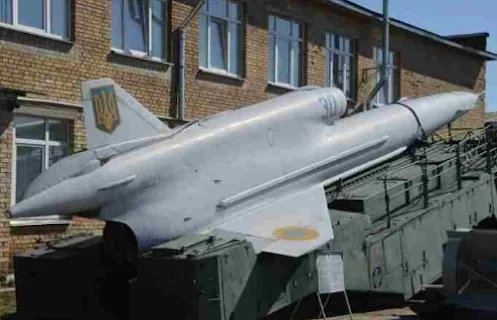When the Russian Shahed-136 (Geran-2) kamikaze drone was forced to stop its attacks due to winter, there was news that Ukraine was actually capable of carrying out attacks with kamikaze drones far into Russian territory.
And the attack that occurred on December 5, 2022, was able to attract the world's attention, because the attack was directed at an important Russian military installation, which incidentally was located far from the Ukraine-Russia border.
Although the exact cause has not been released, however, the explosion rocked two different Russian airbases, Engels and Diagilevo. The Russian Ministry of Defense has claimed that Ukraine used Soviet-era jet-powered drones in the attack.
But Russian sources said the drone was intercepted by an air defense system. Nevertheless, the attack has caused some casualties, although the extent of the material damage remains unclear at this time.
Meanwhile, Anton Gerashchenko, an adviser to the Ministry of Internal Affairs of Ukraine, claimed that drones of an 'undisclosed' type were responsible for the explosions at at least one of Russia's two airbases.
Taken together, the two drone strike incidents above add to evidence that Ukraine has found a way to launch long-range attacks on critical Russian installations using adapted Cold War-era reconnaissance drones.
Located deep in Russia, Engels and Dyagilevo Airfields are bases for long-range strategic bombers used in air strike missions over Ukraine. The air base at Engels — also known as Engels-2 — in the Saratov region is Russia's main Long-Range Aviation Base in the west of the country, and is about 482 km from the Ukrainian border.
The explosion here was reported on Monday morning, just after 06:00 local time, supported by a video posted to social media showing a large explosion at the base.
Local residents reported that the explosion was heard for miles around. Another video, taken in the Saratov region, appears to include the sound of a jet engine just before the explosion. This could be the attack drone itself.
The extent of damage caused by the explosion at Engels has not yet been established, although there have been reports in the Russian media that two Tu-95MS Bear-H strategic bombers were damaged and two people were injured. Quoted from TheDrive.com, the Tu-95MS was widely used to launch cruise missiles against targets in Ukraine since the beginning of the war.
Engels Airfield is also known as the home of the 22nd Heavy Bomber Aviation Division, which operates a squadron of Tu-95 Bear-H and another Tu-160 Blackjack supersonic bomber.
While regarding allegations from the Russian side over the use of jet-powered drones by Ukraine. Some sources point to the Tupolev Tu-141 or Tu-143 type.
This drone with a cruise missile-like appearance can only be flown according to a predetermined path. Because it is present in the completely analog era, the Tu-141/143 does not feature live video feeds. The Tu-143 with the code Reys is a reconnaissance drone, which carries out reconnaissance tasks by taking pictures with a camera, the results of which are only processed after the drone returns to the 'headquarters'.
Uniquely, the Tu-143 was produced in large quantities, reaching 950 units. Its users are not only Russia, it is recorded that the Tu-143 is operated by North Korea, Syria and Ukraine. During the Cold War era, the Tu-143 was even used by Iraq, Czechoslovakia, Bulgaria and Romania.
The Tu-143 was used by Syria on reconnaissance missions over Israel and Lebanon during the 1982 Lebanon War, as well as by Soviet forces in Afghanistan during the Soviet-Afghan War.
Powered by a 590 kg turbojet engine, the Tu-143 can accelerate up to 950 km per hour. While the range of this drone is as far as 200 km and has a flying altitude of up to 5,000 meters. Until now the Tu-143 variant is still used by Russia and Ukraine, but functions as a drone target.



